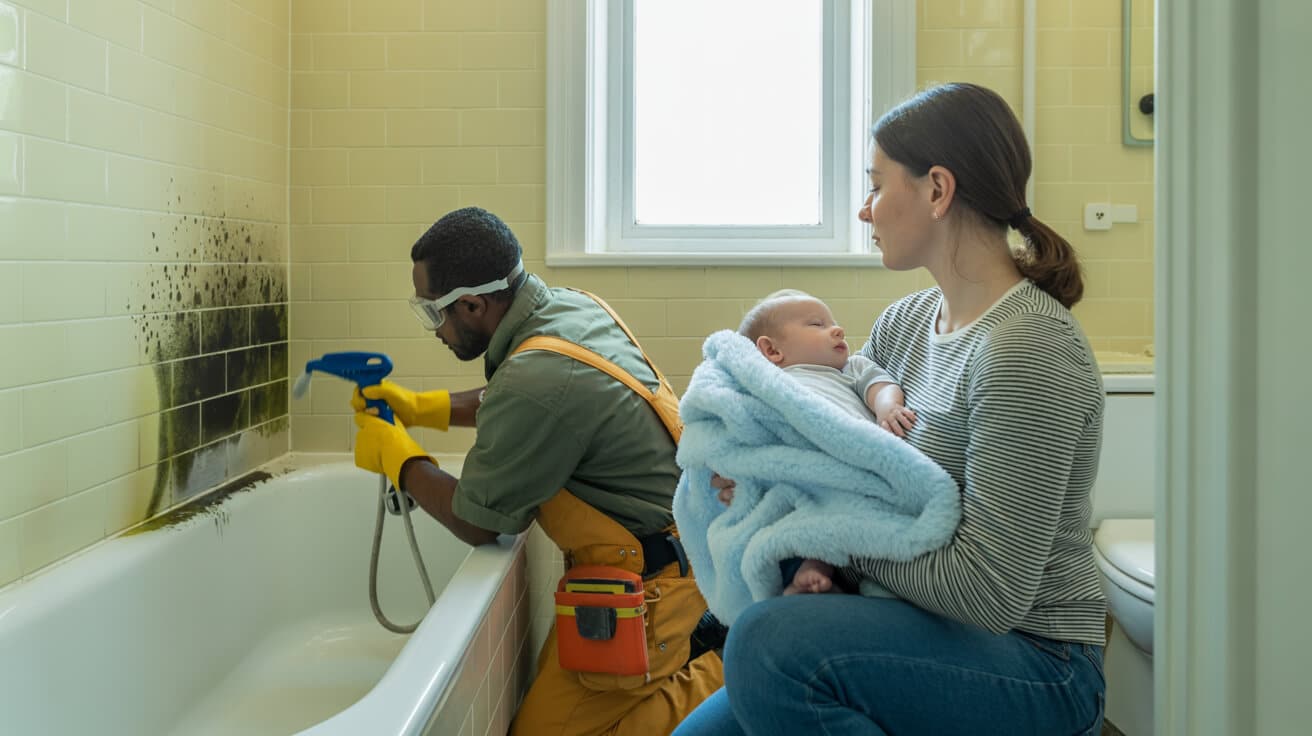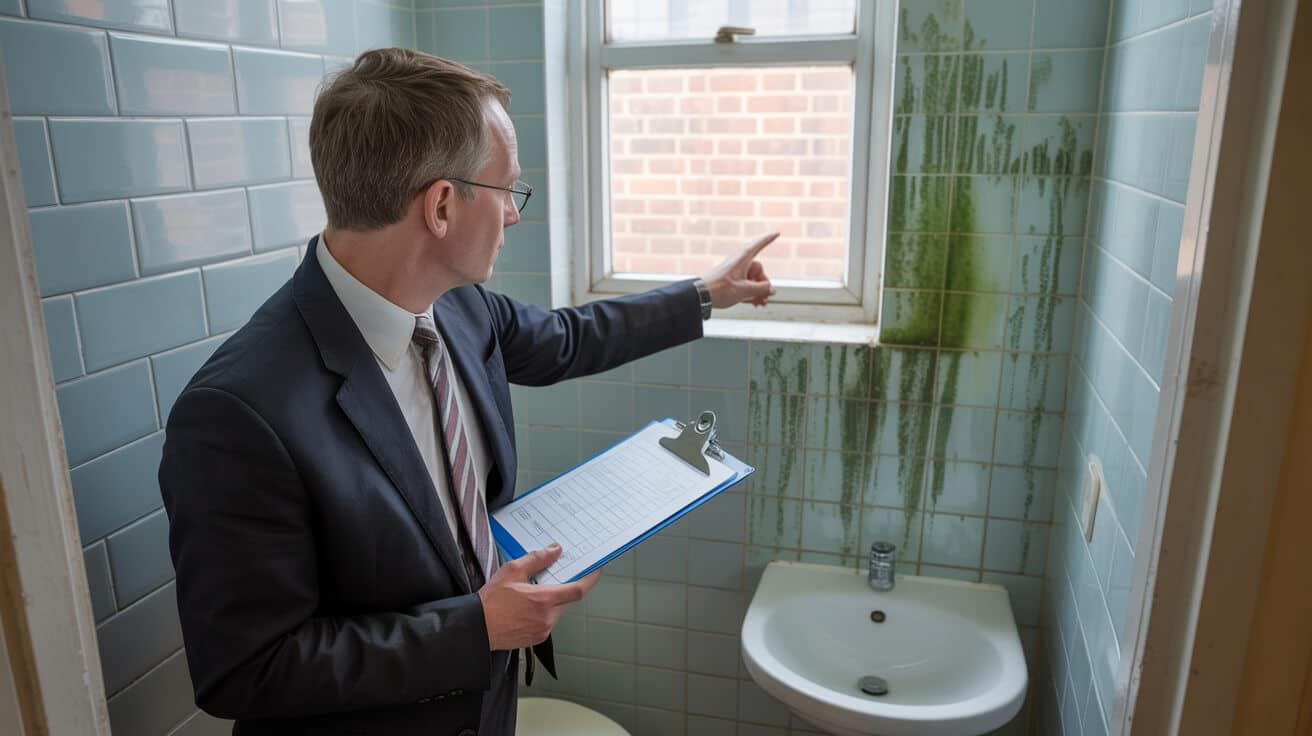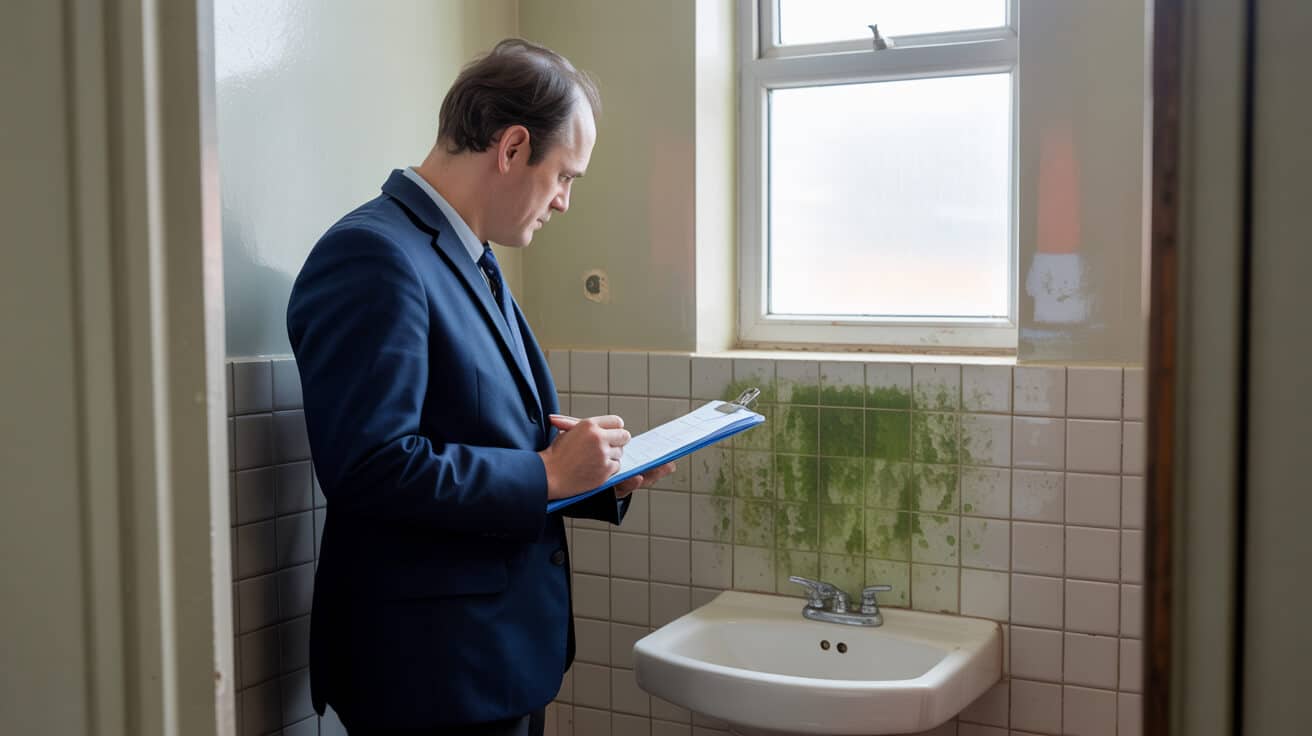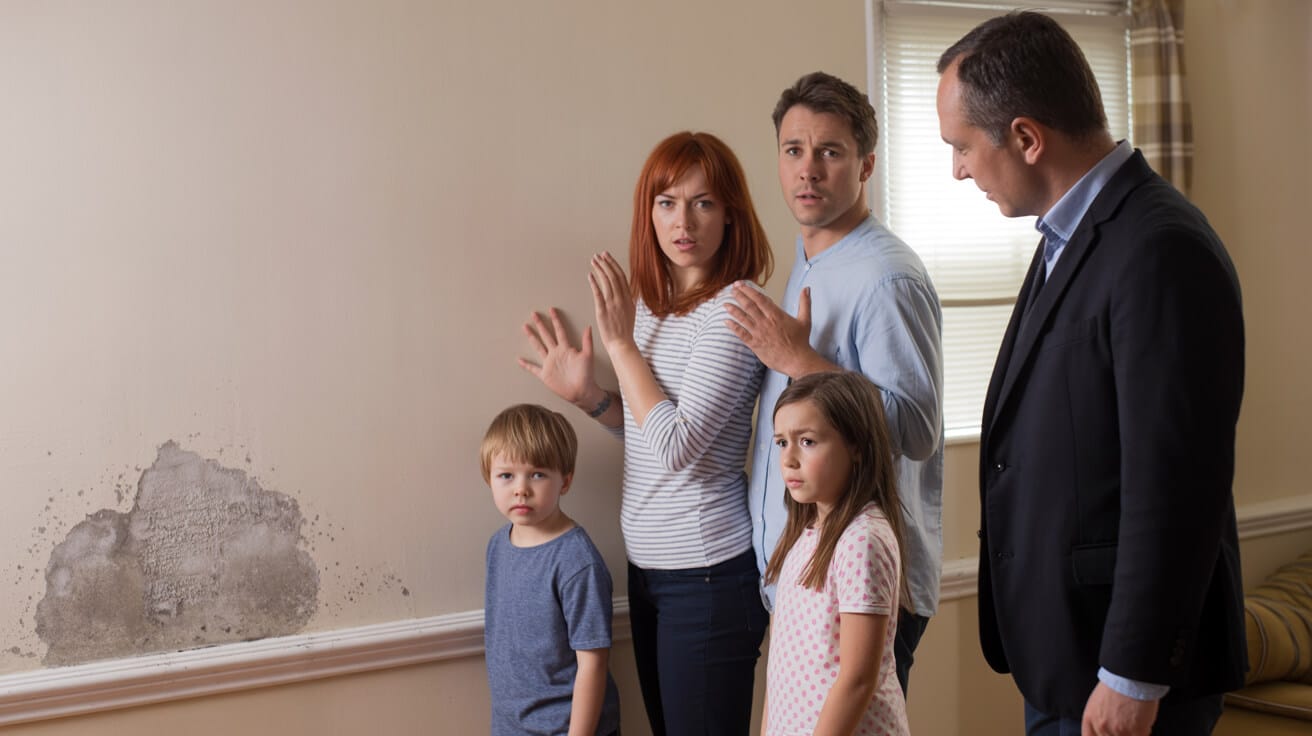 Your Guide To Identifying And Treating Minor Mould Outbreaks
Your Guide To Identifying And Treating Minor Mould Outbreaks

Why Act Quickly When Minor Mould Appears in Your Property?
Every faint patch of mould is your property waving a flag—not just about appearance, but about deeper, quiet trouble. If you manage homes, flats, or commercial premises, minor mould is never “just cosmetic.” It’s a built-in warning system for excess moisture, underperforming ventilation, or even unseen leaks. Most owners or managers hesitate, figuring, “It’s just a spot; I’ll keep an eye on it.” But with damp and mould, delay stacks the odds against you. Each overlooked splotch unlocks a chain of consequences: repairs multiplied, compliance dented, reputation tarnished with tenants or contractors.
Today’s tiny mark is tomorrow’s major repair—mould is never idle.
Mould feeds on inaction. Damp lingers, especially after the heating goes off or a cold snap hits. Let spots lie, and they sink into wall finishes, lift paint, or even invite rot—quietly hiking up costs and headaches. And regulatory obligations? They don’t pause for “minor” stains. For landlords, block managers, or contractors, even small outbreaks raise risks around HHSRS checks, tenant rights, and building insurance. Quick, effective response preserves building health—and your own track record.
Rapid action is more than box-ticking. Check the stats: “Damp and mould can damage building materials and pose health risks if left untreated” (BCP Council). Addressing issues swiftly avoids cycles of recurring damage, saves money on deep repairs, and keeps your properties well-regarded and tenant-safe.
Don’t wait out the next inspection. Spotting—and solving—minor outbreaks early sets you apart as a proactive operator and locks in long-term property value.
What are the Earliest Indicators that Minor Mould Is Forming?

You could live in, own, or manage a property for years, yet miss the earliest signs of trouble. Mould isn’t all black smudges and flaking paint. In the real world, early outbreaks are expert at blending in, popping up as faint speckling or a suspicious tinge in corners nobody checks twice. Listen for a steady musty smell—often strongest in the mornings after a chilly, damp night, or near window reveals shaded from airflow.
Early indicators worth scouting for:
- Pinhead spots: Flecks of brown, grey, or olive—hiding on pale paint, behind curtains, or along skirting.
- Hidden softness: Gentle pressure behind beds or heavy wardrobes reveals “give”—a sure sign of damp beneath.
- Persistent condensation: Windows that never dry, or sills that constantly feel chilly and clammy.
- Subtle odour: “Earthy” or “wet plaster” notes, more pronounced after rain or in unventilated corners.
If you’re only scanning for black marks, you’re missing the cheapest fix window.
Professional bodies nail it: “Mould often presents as black, green, or brown patches, especially near sources of condensation” (National Claims). Each clue gives you a chance—fix a seal, move a wardrobe, or check a vent—before you inherit a big-budget headache.
Routine inspections after seasonal changes or tenant swap-overs are your opportunity. The earlier you catch it, the cheaper—and easier—your response.
Which Everyday Habits Actually Trigger Minor Mould in UK Homes?

It takes less than you think to create the perfect conditions for mould. Sometimes it’s not a leaky roof or flooding but the everyday routines nobody questions. With UK weather patterns and building styles, condensation is the usual villain. You don’t need an old house; even modern builds see outbreaks because of how people live in them.
The most common culprit behaviours:
- Indoor clothes drying: Hanging laundry on radiators or airers with windows shut—especially in winter.
- Forgotten airflow: Neglecting trickle vents, taping over airbricks when painting, or leaving extractor fans off.
- Nighttime moisture: Cooking steam or late showers without turning on or servicing extractors.
- Furniture placement: Sofas and wardrobes flush up against external walls—preventing air flow and letting cold creep in.
- Lapsed maintenance: Failed window hinges, jammed sash lifts, or letting vents fill with dust or paint.
Sometimes a stuck window catch or closed vent is the main difference between a healthy home and a mould-prone one.
Research backs up what technicians see daily: “Over 60% of minor mould outbreaks result from condensation, typically in poorly ventilated homes” (BCP Council). For managers and landlords, giving tenants a “do/don’t” checklist—open the vent, dry clothes outside, clear extractor grills—pays off in fewer emergencies.
Habits can be coached, but if habit lapses lead to an outbreak anyway, next steps matter most. The three-way: DIY, professional, or ignore (and pay later)? The wise path starts with safe, proven home remedies.
How Can You Clean Minor Mould Safely—Without Risking Health or Spread?

If you find a spot less than one square metre, away from electrical points and not linked to a sobbing leak, you can often sort it yourself—provided you use the right kit and strict method. Shortcuts end in headaches: careless scrubbing or skimping on PPE sends spores airborne, sometimes moving the problem from behind the wardrobe to behind your lungs.
Safe, step-by-step cleaning:
- Isolate, then ventilate: Wide-open windows, door closed, and if possible, isolate with plastic sheeting.
- Full PPE: Gloves, FFP2 or better mask, goggles—nothing optional, even on “light” stains.
- Apply treatment: Undiluted white vinegar or 3% hydrogen peroxide only. Spray liberally; allow at least 60 minutes to take hold.
- Wipe, don’t scrub: Use disposable microfibre—gentle lifting wipes, not scrubbing, to avoid aerosolising spores.
- Stubborn stains: Baking soda paste (for grouting/tiles) left for 10+ minutes works well.
- Dispose immediately: Double-bag all cloths/gloves for outside bin; never re-use.
Hard rules:
- Never mix cleaning chemicals—especially bleach with vinegar.
- Never use abrasive pads or wire brushes—it guarantees spore spread and damages finish.
- Never assume PPE is “only for pros”. Your lungs aren’t less valuable.
Cleaning is quick, but protection is mandatory—even professionals never ignore the basics.
Real-world proof? “Undiluted vinegar removes up to 90% of surface mould” (Woman & Home); “Hydrogen peroxide is non-toxic and trusted for household mould removal” (Ideal Response); and baking soda for tiles (HomeServe).
If it keeps coming back, grows, or spreads, surface fixes are not enough. The property has a hidden message for you—listen, investigate, escalate.
Why Does Mould Come Back—And How Do You Find the Real Cause?

When you wipe and it reappears, when fresh paint peels in days, or your puffy skirting gets worse, that’s not bad luck, but a building asking for deeper fixes. Property pros know: recurring mould means recurring moisture, persistent leaks, or ventilation defects. The mistake? Ignoring the messenger and spending on cosmetics, not causes.
Red flags for underlying trouble:
- Frequent repainting with patches reappearing.
- Skirtings, architraves, or doorframes softening.
- Condensation repeating after bad weather or heavy heating.
- Musty odours that intensify after rain or long vacancy periods.
Treat recurring mould as a message from your building: something deeper needs your attention.
Professional insight: “Recurrent mould growth indicates unresolved excess moisture or building defects” (Palm Beach Gardens Mould Removal). Log every outbreak—room, date, weather, cleaning method. This isn’t paperwork; it’s your instant briefing for when you bring in an expert.
Hidden causes emerge in routine surveys: gutter leaks, slipped roof tiles, failed DPC (damp proof course), bridged wall insulation, or even plumbing in converted flats. If fixes don’t stick, call a qualified pro early. They’ll cost less than multiple cycles of painting and sick days for tenants.
What Are the Health Risks of Minor Ongoing Mould—Who Is Most at Risk?

Nobody loves alarmism—but the risks are ongoing, not always dramatic. Tiny outbreaks can create persistent “cold” symptoms, odd rashes, headaches, and sinus trouble that nobody links to the real source. Tenants—especially young, old, or asthmatic—show the effects first. Even healthy adults get worn down by constant exposure at home or the office.
Symptoms that should trigger further checks:
- Unrelenting coughs or blocked nose, even after a doctor’s visit.
- Breathing gets tighter indoors—needing inhalers more often.
- Eye irritation, skin rash, or throat discomfort that vanishes after a weekend away.
- Recurring headaches, brain fog, or poor sleep in certain rooms.
- “Colds” that make their rounds again and again, never quite clearing.
The risk is not how bad symptoms are now, but how much they escalate unnoticed over time.
Health authorities leave no doubt: “Mould in homes is closely linked to allergic reactions, respiratory problems, and worsened asthma” (Seton), and “Prompt action on symptoms reduces risk of chronic issues” (elcosh.org). In blocks or shared rentals, encourage everyone to keep a “symptoms diary”. Early patterns help you spot trouble, support tenants, and shield your organisation from claims.
Recurring symptoms? Time for a property-wide survey—don’t wait for an HHSRS inspection to be your “first diagnosis.”
When Should You Step Back and Call a Professional for Mould Problems?

DIY has limits. When outbreaks get big or ignore your best efforts, it’s not caution—it’s professionalism—to escalate. Some scenarios demand a specialist.
Call for expert help if:
- Any outbreak covers more than 1 m², or crops up in several rooms.
- Patches return or worsen after repeated cleaning.
- You spot signs of hidden damp—crumbling timber, blown plaster, stained fixings.
- The mould is near electrics, deep inside walls, or around window frames with complex assemblies.
- Vulnerable people (elderly, kids, immunocompromised) live or work there.
What do the pros do? They deploy moisture metres, thermal imaging, probe for leaks—often finding the “invisible” culprit behind the mess. It’s not just removal: it’s total risk mapping and precise fix.
For outbreaks above a square metre, or when sources are unclear, compliant professional help is essential for property and personal safety.
The rulebook says: “Health authorities advise special containment for areas over 1 m²—DIY methods are insufficient” (neu.org.uk), and “Accredited technicians use PPE, test for hidden spores, and guarantee removal—following HSE and BS5250 standards” (hse.gov.uk).
A reputable specialist will also provide you with:
- Full written assessment—moisture tracing, repair plan, timeline.
- Correct, code-compliant containment and clean removal.
- Digital records for insurance, landlords, or letting agents.
- Guidance on preventing future outbreaks—saving you from costly repeats.
Don’t let pride or cost sensitivity drag a minor issue into a chronic risk. Professional escalation is a hallmark of responsibility and reputational strength.
How Does All Services 4U Deliver Reliable Mould Solutions—and What Sets Us Apart?

At All Services 4U, we treat mould not as an afterthought but as a building performance and tenant-safety issue. Our compliance-first process is designed to solve the root—not paper over the cracks. That’s why property professionals and private landlords trust us time after time.
We deliver:
- Diagnosis-first approach: Using thermal imaging, moisture tracing, and digital reporting to pin down the hidden causes before anything is removed—or painted.
- Repairs that last: No cut-corners quick fixes. We handle roof repairs, instal ventilation, fix failed insulation, and sort root leaks before dealing with stains.
- Total compliance: All works are signed off to current HSE, BS5250, and landlord letting standards, with digital documentation provided for your records.
- Trustworthy staff: We know keys, access, and privacy matter. Every team member is DBS-cleared, reference-checked, and familiar with working in live tenanted or sensitive environments.
- Aftercare that works: We advise on prevention routines, deliver post-repair checks, and keep detailed logs that make insurance claims or letting audits a breeze.
Code-level rectification means long-term tenant safety and owner peace of mind—shortcuts are not an option.
Backed by independent review portals: “Chosen by landlords and managing agents for transparent, code-compliant repairs” (TrustMark), “All services backed by transparent guarantees and client follow-up” (Checkatrade), and “Track record of timely response and zero-fuss appointments” (RatedPeople). We combine human service with digital transparency.
When you need peace of mind around compliance, value, and health—all roads point to All Services 4U.
Contact All Services 4U Now—Put Mould Problems Behind You
You don’t have to live with “just a patch” and hope for the best. Ready access, nationwide coverage, rapid response—All Services 4U is your property’s backstop for minor or major outbreaks, emergencies or scheduled audits.
Connect for:
- Immediate or scheduled mould cleaning and repair.
- Digital damp and mould surveys—ideal for compliance or due diligence.
- Lasting prevention advice and post-repair checks.
- Easy records for insurance, safety, and letting agents.
Don’t let a minor issue spiral. All Services 4U protects your property, your people, and your investment with evidence-based fixes and compliance at every step.
When your health, compliance, and investment are on the line, trust the certified solution: All Services 4U.
🛠️ This guide is grounded in Hector Gauge’s cross-trade compliance and practical experience. All recommendations follow current NHS, HSE, and UK landlord guidance. For persistent or widespread outbreaks, always engage a certified professional for a full assessment. 🛠️
Frequently Asked Questions
Why does even a small area of mould put your property at risk of hidden damage and future expense?
Minor mould patches are rarely as harmless as they appear—they indicate underlying moisture issues quietly undermining your building’s structural health and legal standing. Even isolated spots reveal excess condensation, leaks, or insufficient ventilation, all of which are entry points for rot, corrosion, and more serious outbreaks. Recent studies show UK homes with “minor” but untreated mould see up to 70% higher risk of recurring structural faults within two years (HES 2022). National health data further highlights a direct link between persistent low-level mould and the onset of respiratory symptoms in adults and children.
Ignoring ‘just a bit’ of mould is like dismissing a warning light on your dashboard—you might feel fine for now, but consequences are stacking up behind the scenes.
Left unresolved, initial patches can erode asset value, prolong tenant voids, and trigger insurance exclusions. UK landlords are now required by the Homes (Fitness for Human Habitation) Act to treat even ‘minor’ persistent mould as a Category 1 hazard—with fines and compulsory repairs if found in inspection. Property managers and commercial asset leads must likewise prove regular mitigation as part of compliance audits.
What are the less visible knock-on effects of “minor” mould?
- Accelerates decay in floor joists, sills, and plasterboard
- Spurs damp-related pests like woodlice, silverfish, and mites
- Raises risk of claims by tenants or employees experiencing chronic cough or aggravated asthma
- Causes insurers to flag the property as a repeat risk, impacting future coverage
Acting early avoids expensive cycles—what starts as a surface mark often signals the start of a compliance marathon. Instead of hoping small patches stay contained, address them decisively and document each action.
How can you reliably detect early-stage mould before it triggers costly interventions?
Early mould signs rarely shout for attention—they thrive in shadows and subtle cues that busy owners or facility teams often miss. Watch for faint brown or grey speckles on cold surfaces, soft patches on walls behind wardrobes, or a recurring “cellar” smell after rain. Even slightly sticky skirting boards or persistent condensation on shaded windows may signal an outbreak brewing out of sight.
If a room feels stuffier after a cold snap or your windows sweat longer than expected, your property is quietly flagging a vulnerability.
What symptoms are often overlooked or misattributed?
- Tiny pinprick spots in rarely accessed storage or utility corners
- Warped or softened paint near window frames or bathroom tiles
- Dampness or swelling in woodwork consistently exposed to cold walls
- Unusual stuffiness or stale odour returning with seasonal changes
- Flickering patches of lifted wallpaper or bubbling paint after refurbishments
A proactive habit—sweeping hidden corners twice yearly, documenting subtle changes, and testing atmospheric humidity—catches mould long before full-scale interventions or regulatory notice. Tenancy changes, recent leaks, or major building works are moments to double-check every “quiet” area.
When should you escalate a subtle sign to professional review?
- Repeated detection of odours in the same zone after cleaning
- Health complaints from tenants or staff linked to specific spaces
- Changes in the appearance or softness of structural elements (skirtings, window sills)
- Inconsistent humidity readings or ongoing condensation in modern, insulated buildings
Raise findings promptly with a maintenance partner like All Services 4U. Early, expert assessment often prevents the expensive tailspin of major remediation and builds a protective compliance record.
Which property routines or habits quietly make minor mould more likely, and how does changing them cut costs long-term?
It’s rarely a single oversight that fuels recurring mould; rather, it’s the small, everyday routines that accumulate risk. Drying laundry indoors without ventilation, shutting all windows ‘for warmth,’ or idling extractor fans—these choices gradually escalate the likelihood of outbreaks in even well-kept homes. Modern UK homes, optimised for energy efficiency, are especially prone: airtight construction saves on bills but can lock in dampness, making good airflow a non-negotiable part of property care.
Today’s comfort-driven choices—sealed windows, extra curtains, energy-saving tweaks—can quietly set the stage for tomorrow’s remediation bills.
Which overlooked routines amplify mould and maintenance risk?
- Keeping wardrobes, beds, or sofas pressed against external walls, blocking air flow
- Delaying or skipping professional ventilation checks after refurbishment or tenancy change
- Letting bathroom or kitchen extractor fans go unmaintained or disconnected
- Overlooking annual inspections of gutters, downpipes, and roof seals
Making “vent and check” routines habitual—opening windows daily, especially after showers or cooking, and regularly running extractor fans—transforms property management from reactive repair to proactive safeguarding. Facilities managers leading multi-unit or commercial assets find success in formalising these routines into compliance logs and shared resident/tenant checklists.
How can landlords and property managers reinforce mould-resistant habits?
- Issue seasonal reminders covering best ventilation and moisture control practices
- Incorporate airflow and humidity checks into each pre- and post-tenancy walkthrough
- Schedule quick inspections post-storms or after any insurance claim event
- Provide new tenants/staff with an illustrated “healthy habits” one-pager
Incorporating these pro-routines is the rare upgrade that improves health, lowers repair costs, and adds compliance proof—all with little outlay beyond attention and habit-shaping communication.
What are the safest and most effective ways to clean up minor mould outbreaks without causing further problems?
Small, isolated patches of mould can be cleaned efficiently with the right approach, but shortcuts often spread spores, expose you to health risks, or disguise lingering moisture problems. The safest method: treat the area as potentially hazardous, not cosmetic. Equip gloves, mask (FFP2+), and goggles. Limit cross-contamination by isolating the room—close doors, open windows, and keep others away.
Apply undiluted white vinegar or 3% hydrogen peroxide, spraying directly onto affected patches and letting it sit for at least 45 minutes. On surfaces like tiles or silicone, a light baking soda paste doubles as a mild abrasive and pH balancer. Wipe gently with damp, disposable cloths, bagging waste immediately for disposal outdoors.
Contain, soak, and gently remove—aggressive scrubbing is out; safety-first tactics win.
Essential steps for safe, thorough DIY mould removal
- Wear suitable PPE: gloves, mask, goggles—protect skin and airway
- Use approved cleaning agents, allowing dwell time before wiping
- Avoid dry brushing or vacuuming, which spreads spores
- Keep the area ventilated before, during, and after cleaning
- Bag all used wipes and PPE; never reuse materials
Professional evaluation is critical if the area is near electrics, larger than one square metre, or recurs after cleaning. Vulnerable groups—like children, elderly, or immune-suppressed individuals—warrant extra caution; seek certified help for outbreaks in their zones. If you’re unsure about the root cause, All Services 4U offers rapid surveys and moisture diagnostics alongside remediation.
When is it necessary to bring in regulated professionals rather than continue DIY cleaning for mould?
DIY is only sufficient when outbreaks are minor, isolated, and responsive to a single treatment. If mould recurs, expands, or appears in high-risk areas (such as near mains wiring, gas pipes, or communal corridors), escalation is essential. The UK’s legal framework (including HHSRS and Homes Acts) places a specific duty on landlords and commercial asset owners to deliver safe, hygienic environments—repeat or persistent mould violations are classified as Category 1 hazards.
When you’re repeating cleans or the outbreak touches electrics, water mains, or shared spaces, it’s time to step up—regulators and insurers expect nothing less.
Triggers for professional intervention
- Surface area affected exceeds one square metre or covers multiple rooms
- Patches are found within one metre of electrical, gas, or heating systems
- Outbreaks persist after thorough DIY cleaning
- Tenants, residents, or staff experience ongoing health issues tied to the affected space
Professionals like those at All Services 4U provide more than deep cleaning—they inspect and document structural defects, trace hidden moisture, and supply compliance evidence vital to insurance and council audits. Their intervention translates to first-time-fix results, lower risk of enforcement, and positive asset reputation.
What should you expect from certified maintenance and remediation services?
- Comprehensive site survey, including moisture and airflow diagnostics
- Recommendations and execution of root-cause repairs (seals, leaks, insulation)
- Photographic and written compliance reports for audit trails
- Instruction or documentation for tenants/residents on ongoing prevention
Partnering with certified, City & Guilds-accredited service teams brings closure and assurance—essential when asset value and legal compliance are your priorities.
What long-term strategies can property owners and managers use to stop minor mould from becoming a recurring financial or reputational threat?
Sustained mould control is less about one-off fixes and more about cultivating a culture of vigilance, documentation, and smart technology. The foundation is robust ventilation—ensuring extractor fans in kitchens and bathrooms work consistently and airbricks or trickle vents aren’t blocked. Use digital hygrometers to keep indoor humidity between 40–60%. Quarterly inspection routines focusing on guttering, roof, insulation, and condensation-prone areas catch small problems early.
Resilient buildings aren’t built on surprises—they’re maintained by owners who see prevention as protection, and documentation as leverage.
Proactive routines that save on future repairs and build compliance trust
- Maintain a detailed logbook—recording outbreaks, fixes, and humidity readings
- Educate every new occupant or operations lead about ventilation, safe cleaning, and early warning signs
- Arrange annual (or semi-annual) professional surveys, especially after major weather or refurbishment
- Implement “quick checklists” for cleaning teams and site managers focused on water ingress, seals, and ventilation
- Adopt technology: smart humidity monitors can send alerts directly to your phone before issues multiply
Insurance providers and auditors reward buildings with clear paper trails and visible preventive action. Services like All Services 4U combine professional inspections with compliance-ready documentation, offering not just emergency response but ongoing partnership for asset—and reputation—protection.
Ready to transition from reaction to resilience? Arrange your next full-site health review or join an asset protection masterclass with All Services 4U—because being known for reliability and care is the best differentiator a property asset can have.



